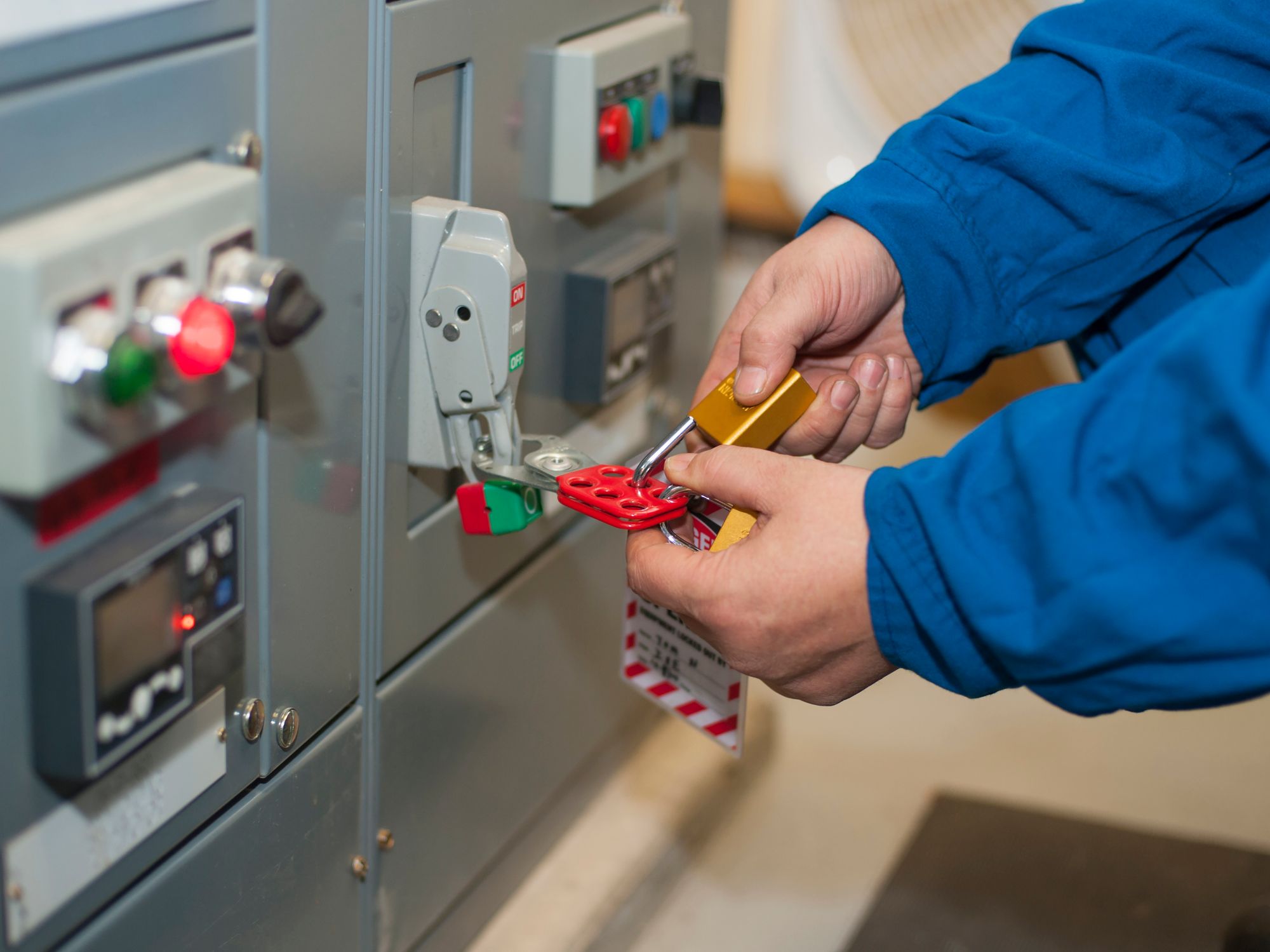What are the requirements for lockout/tagout devices?

- Lockout and tagout devices must be standardized, durable, substantial, and properly labeled.
All employers must provide authorized employees with lockout and tagout devices that meet the requirements of the lockout/tagout standard. These are the only devices that may be used with energy-isolating devices to control hazardous energy during servicing or maintenance, and neither type of energy-control device may be used for any other purpose.
While it’s easier to speak of “locks and tags” than always of “lockout and tagout devices,” different energy-isolating devices will need different protective hardware. To ensure that all such lockout and tagout devices remain easily noticeable and securely attached throughout servicing and maintenance, the Occupational Safety and Health Administration (OSHA) requires all lockout and tagout devices to be:
- Standardized
- Durable
- Substantial
- Labeled
Because lockout and tagout devices must be easily recognized by employees and contractors, all lockout and tagout devices in a facility must be standardized in one or more of the following ways:
- Color
- Shape
- Size
For tagout devices, it is also a requirement that all text be standardized in both print and format.
Non-standardized devices make it difficult to distinguish what is locked out for servicing and maintenance from what is simply locked up. If the same kind of locks an employer assigns as lockout devices are also found on toolboxes or lockers in the employer’s facility, that employer is out of compliance with the standard.
Durable
All lockout and tagout devices must be resistant to wear and capable of withstanding the environment they are exposed to for the maximum period that exposure is expected. Tagout devices must be made and printed so that neither exposure to weather conditions, wet and damp locations, nor corrosive environments would cause tags to deteriorate or their messages to become illegible.
Substantial
Lockout devices must be substantial enough to be irremovable without the use of excessive force or unusual techniques, such as bolt cutters or other metal-cutting tools. For example, a simple little brass luggage lock is neither durable nor substantial enough to be used as an acceptable lockout device.
Tagout devices and their means of attachment must be substantial enough to prevent unintentional removal. The means of attachment for a tag must be:
- Attachable by hand,
- Self-locking,
- Non-releasable,
- Made with a minimum unlocking strength of 50 pounds,
- Designed with basic characteristics at least equivalent to a one-piece, all environment-tolerant nylon cable tie, and
- Made of non-reusable material.
- NOTE: Many employers mistake this to mean that the tags cannot be reused — the tags can be reused, but the attachment mechanism cannot.
Labeled
Each lockout device and tagout device must identify the authorized employee who applies it, using, for example, a warning tag attached to a lock’s hasp or an engraving. This identifies the person to ask about the status of the machine or equipment to which the lock or tag is applied and ensures that, after servicing or maintenance is complete, the employer can readily determine who is missing if a lock or tag is still in place.
These tags must warn employees that the machine or equipment is not to be energized and be properly labeled to accomplish this, with warnings such as “Do Not Start” or “Do Not Open.”
